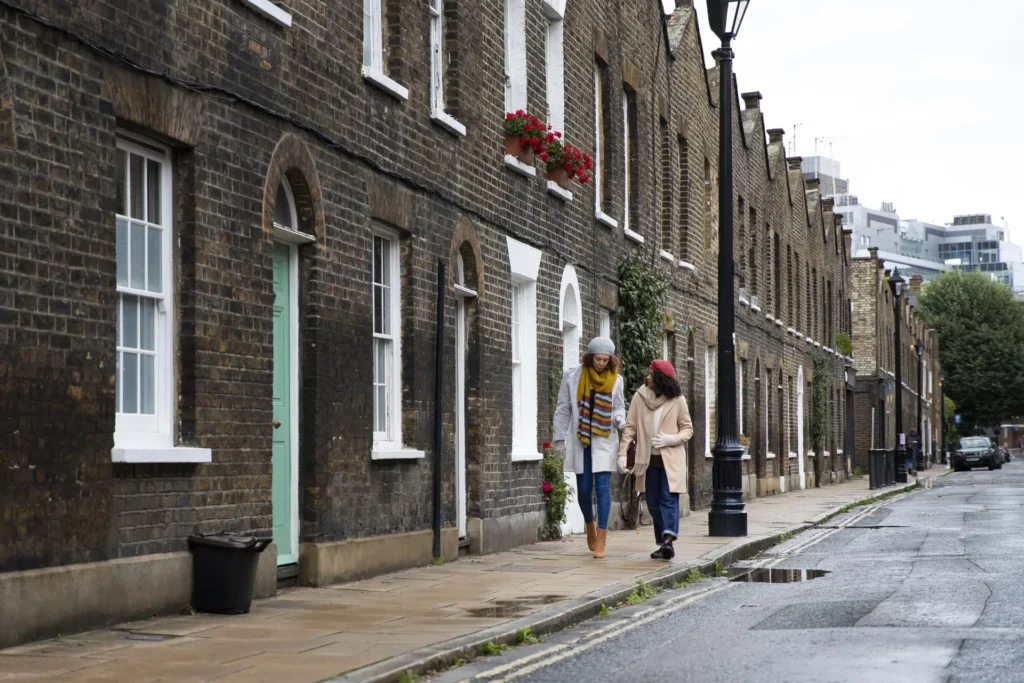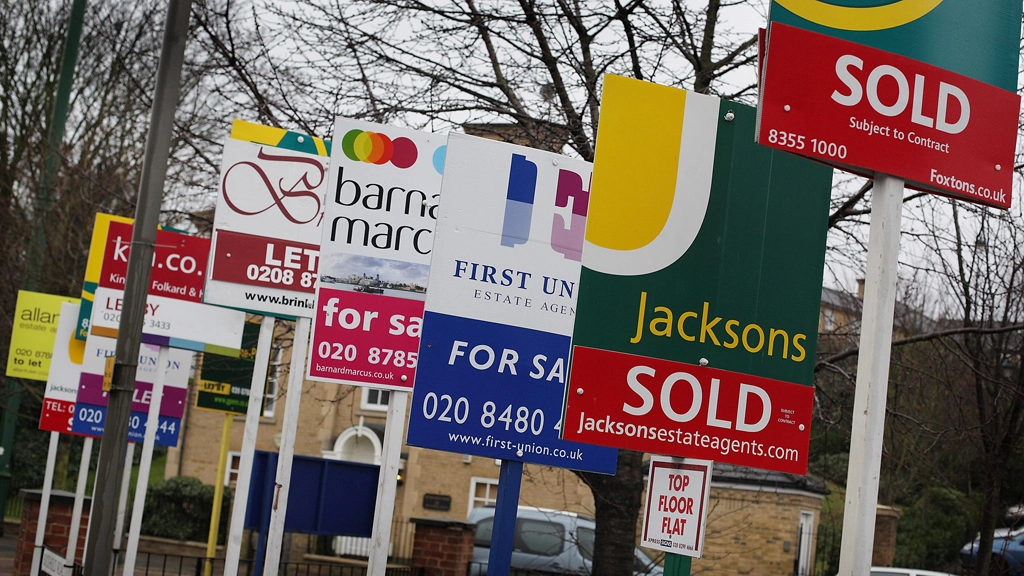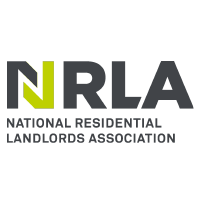
Factors Influencing House Prices in the UK
Before delving into specific prices, it’s important to understand the key factors that influence house prices across the UK:
- Location: The old adage “location, location, location” holds true. Properties in London and the South East typically command higher prices than those in other parts of the UK. Proximity to good schools, transport links, and local amenities also play a significant role in determining prices.
- Property Type: Detached houses, semi-detached houses, terraced houses, and flats all have different price points. Detached houses are generally the most expensive, while flats are often more affordable, particularly in urban areas.
- Condition of the Property: Newly built homes or those recently renovated tend to be more expensive than older, less well-maintained properties. The energy efficiency of a home can also impact its price, especially with rising energy costs.
- Economic Factors: Interest rates, inflation, and the broader economic environment influence house prices. When the economy is strong, house prices tend to rise as demand increases. Conversely, economic downturns can lead to stagnation or even a drop in prices.
- Supply and Demand: The housing market is highly sensitive to changes in supply and demand. In areas where there is a shortage of properties, prices can rise sharply. Conversely, in areas with a surplus of homes, prices may remain static or fall.
Average House Prices in the UK
As of the latest data, the average house price in the UK is approximately £290,000. However, this figure masks significant regional variations. Below is a breakdown of average prices in different parts of the UK:
- London: London remains the most expensive place to buy a property in the UK. The average house price in London is around £530,000. However, prices vary significantly across the capital. For example, in more affordable areas like Barking and Dagenham, average prices are around £340,000, while in more affluent areas like Kensington and Chelsea, they can exceed £1.3 million. Homesearch Properties offers specialised services for those looking to navigate this complex market, helping buyers find properties that match their budget and lifestyle.
- South East England: The South East, which includes counties like Surrey, Hampshire, and Kent, is the second most expensive region after London, with average prices around £370,000. Commuter towns such as Guildford, Reading, and Sevenoaks command particularly high prices due to their proximity to London.
- East of England: This region, encompassing areas like Cambridge, Essex, and Norfolk, has seen significant price growth in recent years, with average house prices now around £340,000. Cambridge, with its thriving tech industry and prestigious university, is one of the most expensive cities in the region.
- South West England: Known for its picturesque landscapes and coastal towns, the South West has an average house price of around £320,000. Areas like Bath, Bristol, and the Cotswolds are particularly sought after, with prices often exceeding the regional average.
- Midlands: The East Midlands and West Midlands offer more affordable options, with average house prices around £240,000. Cities like Birmingham, Nottingham, and Leicester have seen price growth due to regeneration projects and improved transport links, making them attractive options for both buyers and investors.
- North of England: The North East, North West, and Yorkshire and the Humber regions offer some of the most affordable housing in the UK. Average prices in these areas range from £160,000 to £220,000. Cities like Manchester and Leeds have experienced significant price increases due to strong economic growth, while areas like Sunderland and Hull remain more affordable.
- Scotland: The average house price in Scotland is around £190,000. Edinburgh and Glasgow are the most expensive cities, with prices in Edinburgh averaging £330,000. Rural areas and smaller towns generally offer more affordable options.
- Wales: Wales offers relatively affordable housing, with average prices around £220,000. Cardiff, the capital, has the highest prices in the region, averaging around £280,000, while more rural areas offer much lower prices.
- Northern Ireland: Northern Ireland has the lowest average house prices in the UK, around £170,000. Belfast, the capital, has the highest prices in the region, with averages around £230,000.
Price Trends and Market Outlook
The UK housing market has experienced significant fluctuations in recent years, influenced by factors such as Brexit, the COVID-19 pandemic, and changes in government policy. However, the market has shown resilience, with prices continuing to rise in many areas.
- Post-Pandemic Recovery: Following the initial shock of the COVID-19 pandemic, the housing market rebounded strongly, driven by pent-up demand, low-interest rates, and government incentives like the Stamp Duty holiday. While the rate of price growth has slowed in 2024, many regions continue to see modest increases.
- London’s Cooling Market: London has seen slower price growth compared to other regions, with some areas even experiencing slight declines. This is partly due to the high cost of living and changes in buyer preferences, with more people seeking larger homes with outdoor space, often outside of the capital. However, prime central London properties continue to attract high-net-worth buyers, particularly from overseas. Homesearch Properties London is well-positioned to assist buyers navigating this complex market, offering tailored services to find properties that meet specific needs and budgets.
- Regional Growth: Regions such as the North West, Midlands, and South West have seen some of the highest price growth in recent years. This trend is expected to continue, driven by economic development, infrastructure projects, and the increasing desirability of cities like Manchester, Birmingham, and Bristol.
- Affordability Challenges: Despite the overall price growth, affordability remains a significant challenge, particularly for first-time buyers. High prices, coupled with the need for substantial deposits and the ongoing cost-of-living crisis, have made it increasingly difficult for many to get onto the property ladder. However, government schemes like Help to Buy and Shared Ownership continue to provide some assistance.
The Role of Homesearch Properties
In such a complex and competitive market, having expert guidance is invaluable. Homesearch and Homesearch Properties offer a range of services designed to help buyers and sellers navigate the UK housing market with confidence.
- Property Search: Whether you’re looking for a family home, an investment property, or your first step onto the property ladder, Homesearch provides comprehensive property search services. By leveraging their extensive network and market knowledge, they can help you find the perfect property at the right price.
- Market Analysis: Understanding market trends is crucial for making informed decisions. Homesearch offers detailed market analysis, providing insights into price trends, regional variations, and future market predictions. This information can help you make strategic decisions, whether you’re buying, selling, or investing.
- Tailored Services: Homesearch Properties offers tailored services for those looking to buy or sell in the capital. From sourcing prime properties in sought-after areas to negotiating the best deals, their expertise in the Homesearch London market is unparalleled.
- Investment Advice: For those looking to invest in the UK property market, Homesearch offers specialised advice. They can help you identify high-growth areas, understand rental yields, and navigate the complexities of buy-to-let investments.
- Personalised Support: Every client has unique needs and circumstances. Homesearch offers personalised support, ensuring that you receive the advice and assistance that is right for you. Whether you’re a first-time buyer or an experienced investor, their team is there to guide you every step of the way.
Making the Right Move in the UK Housing Market
The UK housing market offers a wealth of opportunities, but navigating it requires careful consideration and expert guidance. With average house prices varying significantly across regions and property types, understanding the market is key to making informed decisions.
Whether you’re drawn to the vibrant and fast-paced market of London or the more affordable and rapidly growing regions like the North West and Midlands, Homesearch Properties are there to help you every step of the way. Their deep market knowledge, personalised services, and commitment to client satisfaction make them invaluable partners in your property journey.
As you embark on this journey, remember that the right property is out there, waiting to be found. With the expertise of Homesearch at your side, you’ll be well-equipped to find a home that meets your needs, fits your budget, and secures your future. Whether you’re buying, selling, or investing, making the right move in the UK housing market starts with understanding your options and having the right team to guide you.








